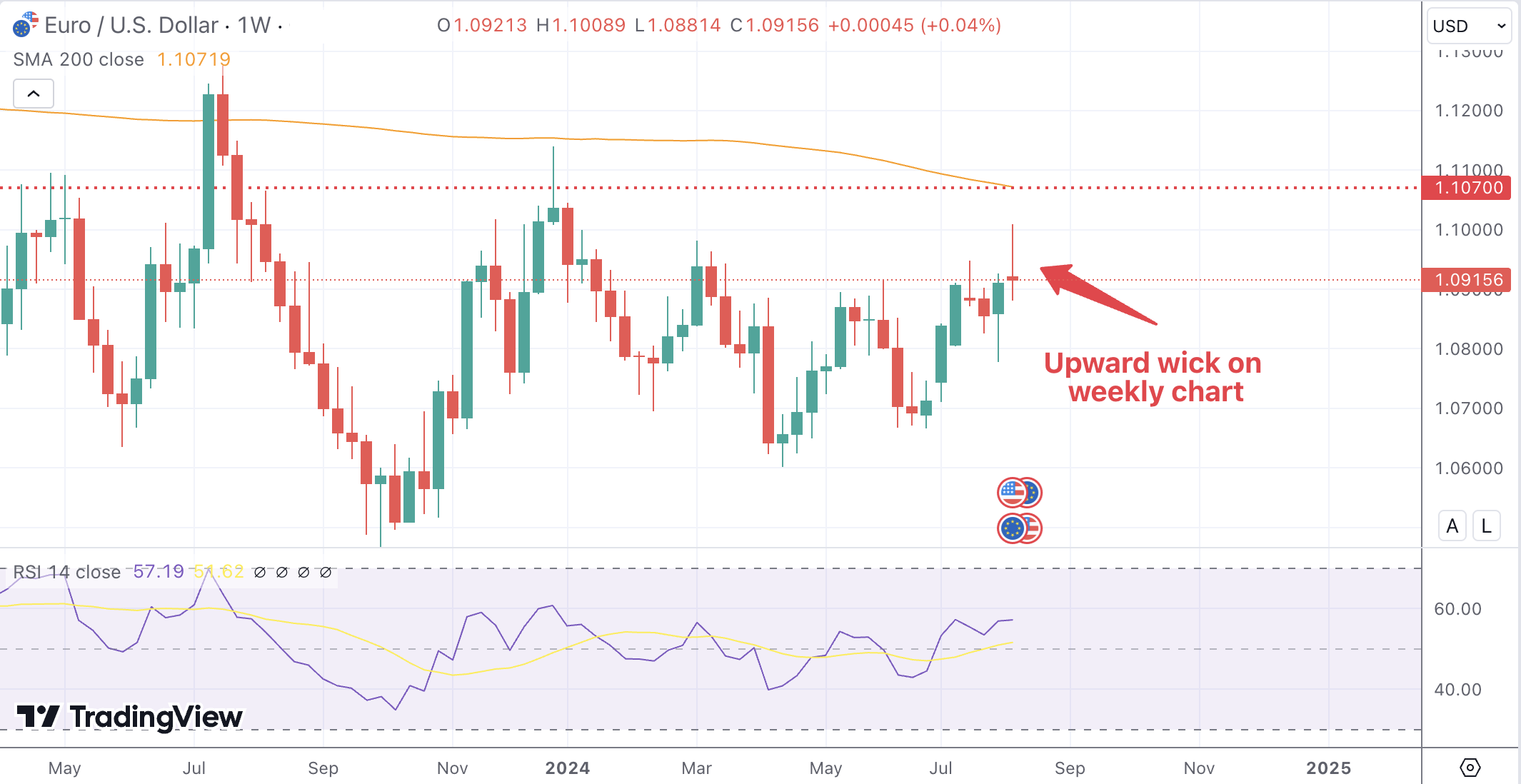Key Takeaways:
- US Economic Data: Upcoming CPI, PPI, and Retail Sales data will be crucial in shaping expectations for the Fed’s next move. Inflationary pressures could support the US Dollar, while weaker data might lead to further speculation of rate cuts.
- Eurozone Growth Figures: The Eurozone’s GDP and industrial production data will be key in determining the region’s economic outlook and influencing the ECB’s policy decisions.
- Technical Levels: Resistance at 1.1008 and 1.1070, with support at 1.0880 and 1.0800, will be pivotal in determining the EUR/USD pair’s direction.
Market Dynamics and Recent Performance
The EUR/USD pair ended the previous week slightly above the 1.0900 mark, reflecting a week of cautious trading amidst mixed economic signals. Investors have been on edge due to central banks’ monetary policy decisions, particularly those of the Federal Reserve (Fed) and the European Central Bank (ECB). The US Dollar initially weakened as market participants began speculating on the possibility of the Fed trimming interest rates before the September meeting. This sentiment was exacerbated by concerns over recession risks, fueled by dismal US macroeconomic data and geopolitical tensions in the Middle East.
However, as the week progressed, the US Dollar regained some strength, recovering most of its early losses. This was supported by better-than-expected US ISM Services PMI and Initial Jobless Claims data, which helped ease some recession fears. On the other hand, the Euro saw limited upside potential due to the mixed economic data from the Eurozone, particularly Germany, where industrial production showed some resilience but was offset by weaker retail sales figures.
Technical and Fundamental Influences
Technically, the EUR/USD pair has shown signs of losing its upward momentum. The pair faced strong resistance around the 1.1008 level, which marked its highest point since early January. The weekly chart reveals a long upward wick, suggesting that the bulls failed to maintain control, and selling interest emerged at higher levels. The pair continues to trade above the 20 and 100 Simple Moving Averages (SMAs), with the 200 SMA providing dynamic resistance around the 1.1070 level. Daily indicators like the Relative Strength Index (RSI) are consolidating near neutral levels, limiting the pair’s bearish potential.
Fundamentally, the upcoming week will be dominated by key economic releases from both the US and Eurozone. The US will publish its July Consumer Price Index (CPI) and Producer Price Index (PPI), alongside Retail Sales data and the preliminary estimate of the August Michigan Consumer Sentiment Index. These figures will be closely watched for any signs of inflationary pressure or consumer confidence that could influence the Fed’s next move.
In the Eurozone, the focus will be on the second estimate of Q2 Gross Domestic Product (GDP) and June Industrial Production data. Germany’s ZEW Economic Sentiment Survey will also be critical in assessing the economic outlook. The outcome of these releases will play a significant role in shaping the EUR/USD pair’s trajectory in the short term.
Looking Forward
Looking ahead, the EUR/USD pair’s movement will be heavily influenced by the forthcoming inflation and growth data from the US and Eurozone. The market will closely monitor the US CPI and PPI figures for any signs of inflationary pressure that could prompt the Fed to adjust its policy stance. Similarly, the Eurozone’s GDP and industrial production data will provide insights into the region’s economic health and the ECB’s potential response.
Key resistance levels to watch are at 1.1008, with a break above this level potentially targeting the 1.1070 area. On the downside, support is seen at 1.0880, with a more significant support level at 1.0800. A breach of these levels could open the door for further declines towards the 1.0720 zone.


